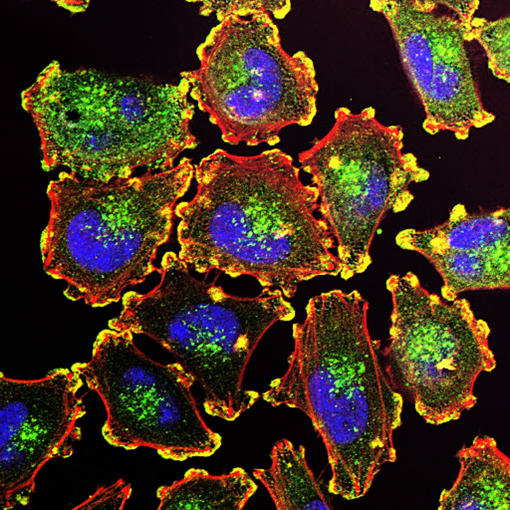The next generation of multiomics: More modalities, all from a single cell
Our first-ever Next Generation Multiomics Symposium was filled with engaging presentations, covering everything from oncology to immunology, but there was one overarching theme: multiomics enables researchers to reach deeper insights and obtain a more complete picture of complex biology.

Our main priority is providing scientists with innovative solutions for single cell and spatial analysis that meet their needs, now and in the future. We were thrilled to see how researchers are using one of our innovative multiomic products, Chromium Single Cell Multiome ATAC + Gene Expression, a product that allows the simultaneous measurement of two distinct data types (chromatin accessibility and gene expression) from the same single cell. This permits researchers to discover hidden insights, characterizing cell types and states and uncovering gene regulatory programs, without inferring relationships between different data types derived from separate samples.
We want to highlight two groups of researchers who are pushing the boundaries of multiomics approaches with the development of powerful new techniques—TEA-seq and DOGMA-seq—that allow the detection of three, and even four, data types from the same single cell.
Peter Skene, PhD, and Lucas Graybuck, PhD, researchers at the Allen Institute for Immunology think of the immune system as a rheostat, constantly regulating itself, addressing changes or imbalances with varying levels of response. However, when the balance tips too far in either direction, as in hypo- or hyper-immunity, disease can develop. Drs. Skene and Graybuck are working to better understand the gene regulatory pathways that play a role in these immune responses, how they can lead to disease states, and at which points in the process therapeutic intervention might be most effective. Using Chromium Single Cell Multiome ATAC + Gene Expression, they were able to simultaneously profile gene expression with chromatin accessibility, but, because the protocol requires single nuclei as input, they were missing cell surface protein expression information that could be crucial to their research.
Determined to capture as much information as possible, they developed TEA-seq, a method that allowed them to use whole cells within the Single Cell Multiome ATAC + Gene Expression workflow and simultaneously capture trimodal measurements of RNA, protein epitopes, and chromatin accessibility. With three data types from the same cell in hand, they could see that the measurements for loci were frequently concordant: 1) chromatin at the promoter region was open, 2) RNA was expressed, and 3) protein was expressed. In certain cases, however, such as for B-cell lineages, the CD86 promoter, whose dysregulation may be involved in cancer, is open and accessible (i.e. primed for transcription), but RNA and protein are not expressed. In these cases, it may not be possible to infer linkages between cell clusters. Simultaneous measurements from the same cell help overcome limitations of computational linkages.
Find out more about TEA-seq in the on-demand presentation. Watch now →
For Eleni Mimitou, PhD, Senior Research Scientist at the New York Genome Center (now at Immunai), creating multimodal approaches for single cell analysis is its own end. Her research focuses on innovation, finding ways to get more insights out of existing single cell technologies. With assays like Single Cell Multiome ATAC + Gene Expression, it’s possible to profile both gene expression and chromatin accessibility from the same single cell, but, like Drs. Skene and Graybuck, Dr. Mimitou believes that combining these modalities with protein expression is the natural next step. That’s why she and her colleagues have developed DOGMA-seq, a technique that makes it possible to simultaneously profile up to four modalities—gene expression, protein expression, mtDNA, and ATAC data—with the Single Cell Multiome ATAC + Gene Expression assay, allowing users to track gene activity across the central dogma of gene regulation. One example that highlighted the power of DOGMA-seq to reveal new insights into gene regulation was the well-studied PBMC samples, in which they found uncoupled responses between chromatin, RNA, and protein abundance at several key loci upon stimulation of T-cell activation. Furthermore, mtDNA mutations as an optional add on could be used for cell lineage tracing.
Learn about the science behind DOGMA-seq in Dr. Mimitou’s on-demand presentation. Watch now →
Thank you to everyone who joined us at the Next Generation Multiomics Symposium and to the amazing researchers who presented for their exciting contributions to the field!
About the author:

